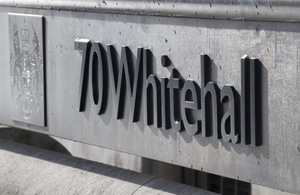Employee engagement and wellbeing: Driver and Vehicle Standards Agency: Area 1 – Testing
How the Area 1 - Testing team from the Driver and Vehicle Standards Agency maintained high staff wellbeing from 2012 to 2014.

Key ideas from this case study:
- make use of People Survey results, and see great scores as things to maintain
- give employees a voice: ask yourself am I listening to my team members?
- listen to employees when they mention things that might be problems in the future, even if they are not problems now
- give staff as much clarity as possible during organisational change
The Area 1 – Testing unit at the Driver and Vehicle Standards Agency is a set of 4 vehicle testing and enforcement stations. It consists of about 30 inspectors and administrative staff.
The team has shown consistently high wellbeing scores in the 2012, 2013, and 2014 People Surveys, with about 70% of staff feeling satisfied with their lives and nearly 80% reporting low levels of anxiety.
One of the station managers was interviewed to understand how these great results were obtained.
Understanding engagement and giving staff a voice
The team make considerable use of the People Survey. One of the station managers looks after employee engagement issues, and, on the back of People Survey results, looked to give staff a voice beyond giving feedback to their line managers.
Giving employees a voice means they can express grievances and offer ideas on how things can be done better, and how their working environment may be improved.
The team’s efforts to increase employee voice began with a series of small focus groups to analyse People Survey results and to provide input on why the scores were high and low in different areas. This was then followed by more formal sessions at which volunteers met to develop action plans.
Through this process, the team has sought to develop a culture that asks managers: are we effectively listening to our team members? As a consequence, employee feedback has led to tangible change, such as improvements to roadside technology.
Uniting the team and communicating effectively
A challenge for the team is its geographical spread. This has prompted the establishment of a team email address to make the team more coherent.
Managers have also developed a Team Briefing Promise to make sure that team briefing meetings occur, and they are two-way. Staff can add items to the agenda and provide feedback to managers.
Managers feel that wellbeing has stayed high over a period of organisational change due to strong, clear, and coherent communication with staff. This means setting easily understandable and direct objectives with team members and giving regular feedback. Performance is benchmarked against clear data.
Giving staff greater certainty about what they need to do and where the organisation is going can reduce anxiety.
Maintaining high wellbeing by preventing problems
Managers of the team look to predict problems before they arise. The team’s managers keep track of wellbeing in the team by making People Survey results a mandatory item for discussion at team briefings.
The team has a zero tolerance approach to instances of bullying and harassment and an open door policy for reporting it.
The team aims for a single action plan and encourage employees to speak up, which helps prevent challenges to team members’ wellbeing before they begin. The team’s high wellbeing scores are well known by managers not only as scores to celebrate, but also as scores to maintain.
Benefits to the business
The team’s leaders know that high wellbeing scores promote a whole range of benefits that will shape the future of the Agency.
The team’s employees are more motivated, have fewer sick days, produce more and in turn promote economic growth. They are more likely to develop their skill base which leads to greater flexibility and efficiency.
The Agency is subsequently likely to be seen increasingly as an employer of choice, potentially improving employment longevity and retention rates, and thus reducing costs.